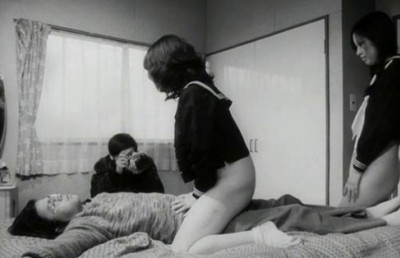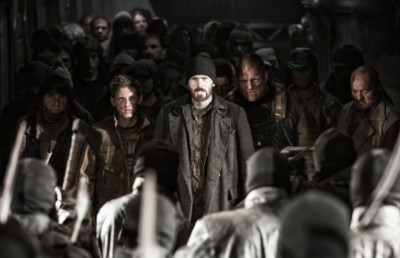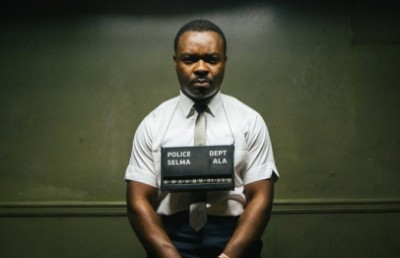Decoding The Secret in Their Eyes: Domestic and Transnational Meanings
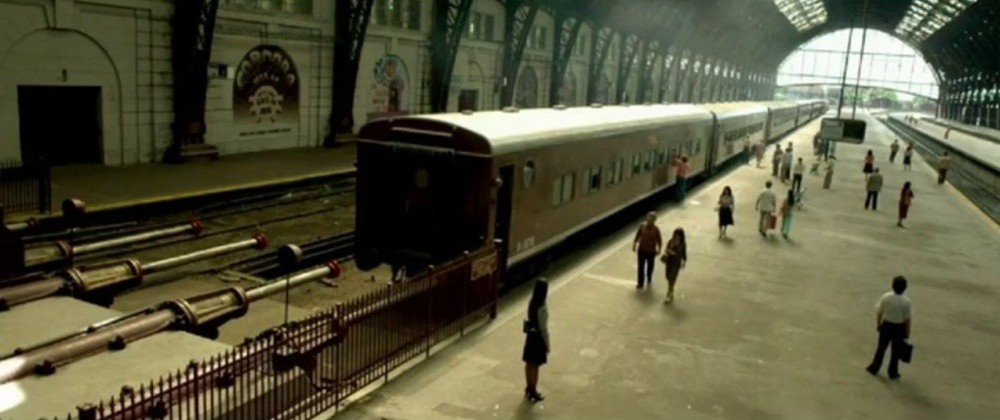
The Secret in Their Eyes (El secreto de sus ojos) (2009), a tightly written crime thriller from writer-director Juan José Campanella which mixed mystery, romance, politics, and moments of comedy to produce a box office phenomenon, can be seen as commercial fare with what seems at first to be at best a tenuous connection to the two types of film most identified by international critics with contemporary Argentine cinema as represented by explicitly political work such as La historia official (1985, Luis Puenzo) on the one hand, and the more recent New Argentine Cinema identified with filmmakers such as Albertina Carri and Pablo Trapero on the other. However, while Campanella’s film was certainly commercial, it is more accurately placed in a sub-stream of Argentine popular genre cinema which can be described as “indie-commercial.” Further, it can also be taken as an example of transnational cinema in that it is carefully crafted to appeal to international audiences while containing references largely invisible to non-Argentines that enhance and layer its meaning for the domestic Argentine viewer. It is these references that might not only explain why it struck such a chord with Argentines, but also links the film thematically and stylistically to the other streams of Argentine national cinema.
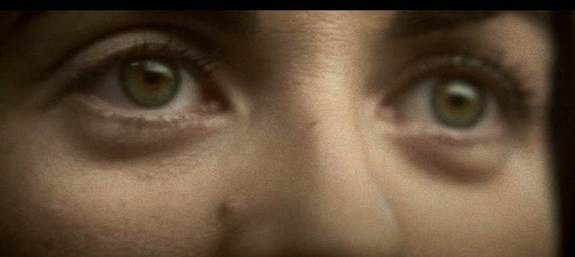
In a way, the most interesting thing about The Secret in Their Eyes is the magnitude of its commercial success. In a market traditionally dominated by big budget Hollywood imports, The Secret in Their Eyes stormed the box office, becoming not only the year’s most popular film in Argentina, but the most commercially successful film in Argentine history. Made for approximately $2 million, a reasonably large budget by the standards of the Argentine film industry, it earned a record $9.25 million in domestic cinemas. It made another $6.4 million in the United States, as well as achieving commercial success in Europe and around the world, making it by far the most successful Argentine film in international markets as well. 1 Further, unlike most Argentine films that find a domestic audience, typically low budget sex comedies or action films starring performers from telenovelas (formulaic but enduringly popular television soap operas), The Secret in Their Eyes was also a critical success, sweeping the Silver Condors (awarded by the Argentine film critics) with 13 awards, including Best Picture, Actor, Actress, Supporting Actor, Director and Screenplay. In addition, it won many international awards, becoming only the second Argentine film to win the Academy Award for Best Foreign Language Film, as well as picking up the Goya for Best Spanish Language Foreign Film, the BAFTA for Best Foreign Language Film and a number of film festival prizes. Given all this, it is reasonable to ask what it is about this particular Argentine film that is so appealing?
International critics noted the story’s setting during Argentina’s political turmoil of the 1970s, but saw the politics as being submerged by its genre elements (Matheou 21), and instead treated it as a quality thriller. A particular subject of universal praise was a six minute sequence that begins with an aerial view of a football stadium, initially a CGI animation which transforms into a zoom that finishes on a close-up of the film’s hero, Benjamin Esposito (Ricardo Darín). The shot is cleverly edited to look like a single camera movement which then shifts without a cut into a nervy extended chase scene filmed as a long take with a hand-held camera. Peter Travers of Rolling Stone described it as “thunderously exciting” (Travers) and Kuhu Tanvir of Wide Screen claimed it was “easily one of the most incredible pieces of camerawork cinema has seen” (Tanvir). This was something of a breakthrough for Argentine cinema, whose films, as Tamara Falicov notes, “are often thought of as inferior to Hollywood in terms of technical quality” (5). As Falicov explains, emphasis on a film’s technological innovations has been responsible for the domestic commercial success of Argentine films such as Comodines (1997, Jorge Nisco and Daniel Barone), billed as “the first Argentine film to have a real helicopter explosion” (Falicov 98). Therefore, achieving a level of technical expertise high enough to impress foreign critics was undoubtedly part of The Secret in Their Eyes’ appeal.
However, there is a debate about the value, other than commercial, of films that achieve high standards of technical achievement in the creation of genre films. Falicov argues that films such as Comodines cannot help but irk “those who see Argentine cinema as a medium that should be used to tell local stories – not to replicate the language of Hollywood” (112-113). This question becomes important when taking into account the tendency of mainstream commercial Argentine films to avoid local specificity in the hope of appealing to international audiences. Falicov criticizes this “global aesthetic” which sets stories “in generic locations such as supermarkets, office buildings, the freeway and a cemetery” (97) and asks if the resulting films have anything to do with Argentina at all when the dialogue being spoken in Spanish “seems to be the sole marker of difference from Hollywood” (113). This view has been criticized as essentialist, with Deborah Shaw pointing to Nueve reinas (Nine Queens) (2000, Fabián Bielinsky), a film that stays within the industry’s star and genre system while being carefully set in locations without any national identifiers (68). Despite this, she argues that describing it as “little more than an Argentine version of an American genre is to grant Hollywood exclusive rights to these ingredients and to ignore the film’s roots in Argentine culture and society” (68). That is, underneath its ostensible lack of national signifiers, Nueve reinas makes savagely critical observations about Argentina and the economic meltdown it was then enduring. So while it is undeniable that most mainstream commercial Argentine films, as typified by the decade’s second most popular Argentine film at the domestic box office, Un novio para mi mujer (2008, Juan Taratuto), a broad sex comedy starring telenovela idol turned TV tycoon Adrian Suar, make little or no attempt to comment critically on Argentine society, there is a section of the commercial cinema that is more ambitious.
Ana Laura Lusnich suggests that Nueve reinas is unique in the way that it “synthesizes a dialogue between industrial and commercial films and independent films” (118). She argues that while it is a genre film, Nueve reinas “deals with universal topics” while “presenting a subtext that condenses the historical and political local reality” (119). In this way, the film distinguishes itself from mainstream commercial cinema, a category in which Lusnich includes both Comodines and the work of directors such as Campanella and Daniel Burman, while instead linking Bielinsky’s film to New Argentine Cinema (117-118). However, her claim that since they are “technically sound” and “conceived as entertainment for broad segments of the population” (117-118), films such as El hijo de la novia (Son of the Bride) (2001, Juan José Campanella) and Lost Embrace (2003, Daniel Burman) are entertaining trifles with vestigial connection to Argentine society is problematic. As Jens Andermann notes, these films contain a subtext of social commentary (in their cases, dealing with Argentina’s financial crisis) that uses genre to place them “in a critical dialogue with the social present” (40). More convincing than Lusnich is Andermann’s argument that Campanella, Burman and Nueve reinas director Fabián Bielinsky all belong in the same filmic category (38-39), while accepting Lusnich’s identification of this space as sharing characteristics of both mainstream commercial and New Argentine Cinema films.
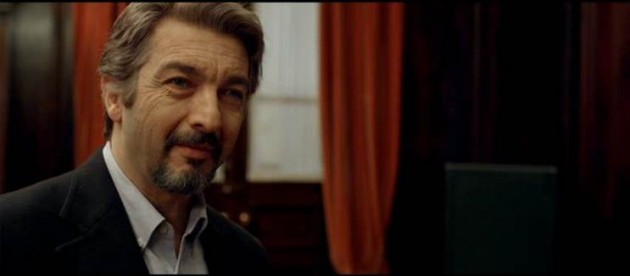
Ricardo Darín
A central figure in this “indie-commercial” space is Ricardo Darín, who developed into Argentina’s most popular actor after forming creative partnerships with writer-directors Juan José Campanella, Eduardo Mignona and Fabián Bielinsky, and starring in a series of films that received great commercial and critical success in Argentina and around the world. During a remarkable sixteen-year run (so far), he has been nominated for the Silver Condor Award (voted by the Argentine Film Critics Association) for Best Actor eleven times, winning five, while starring in four of the period’s most popular films (The Secret in Their Eyes, El hijo de la novia and Luna de Avellaneda, all written and directed by Campanella, as well as Bielinsky’s Nueva reinas). Darín’s persona is that of a rumpled everyman who thinks he knows all the angles but turns out to be not as smart an operator as he believed. Since his most popular films typically feature this attractive and charming audience surrogate being beaten down and overwhelmed by forces larger than him, it can hardly be an accident that his rise to stardom coincided with Argentina’s economic crisis. As Andermann writes, he struck a chord with audiences facing desperate times and “looking for imaginary releases from the effects of a crisis threatening their social position, personal and gender identities and self-esteem” (132). While The Secret in Their Eyes is not directly concerned with Argentina’s economic crisis, the social and political overtones of Darín’s persona proved highly transferable to a narrative dealing with the violent political events of the 1970s, a transference that links the films to another stream within Argentine cinema.
This stream is the series of political films which emerged in the aftermath of the 1976-83 military dictatorship, a time of ferocious political violence known as the Dirty War, in which tens of thousands of Argentines were tortured and murdered by agents of the state. These post-dictatorship narratives dealt explicitly with that period by “developing parallel plots involving identity or the political” (Aguilar 16). While borrowing from traditional genres as disparate as melodrama, mystery thrillers and musicals, directors such as Maria Luisa Bemberg, Luis Puenzo and Fernando Solanas created films that allegorized the violence of the period (Falicov 71) by offering audiences “messages to decode” (Aguilar 16), a legacy that continues, according to Gonzalo Aguilar, in more recent films by filmmakers such as Marcelo Pineyro, Carlos Sorin and Eduardo Mignona (16). While primarily a crime thriller, The Secret in Their Eyes has a strong relationship with this type of film since its narrative is carefully structured to parallel and comment on the political events which immediately preceded the Dirty War. Similarly, it also offers messages to decode that contextualize and give additional meaning to the foregrounded plot details, and features personal relationships which allegorize the period’s politics. An example of a similar approach to allegorizing the political violence can be seen in the way La historia official shows the protagonist being beaten by her husband (a beating which includes such torture staples as banging her head against the wall and slamming a door on her hand) to symbolize “the violence the state commits toward its citizens” (Falicov 71) and in The Secret in Their Eyes having a future member of the security services committing a crime (the rape and murder of a young woman) which agents of the state routinely committed during the Dirty War.
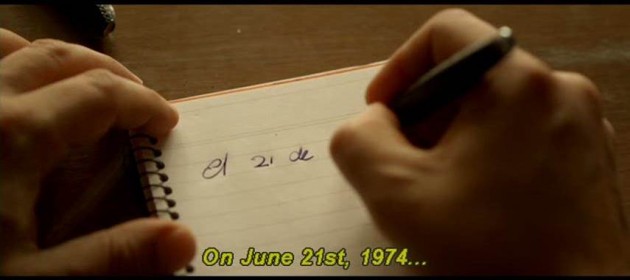
What is also interesting about these political messages is that they are easily identifiable to Argentines while simultaneously being close to invisible to international audiences, typical of transnational cinema’s characteristic of providing different messages for different audiences. An example of this is the graphic which identifies the date of the rape-murder that sets off the plot as June 21, 1974. To non-Argentines, this simply resembles graphics typical of police procedural TV shows such as Law and Order and its spinoffs, of which Campanella has directed episodes. However, to Argentines this places the story in a very specific context, since it is 10 days before the death of then Argentine President Juan Peron, an event which marked the beginning of the country’s slide into political violence and would have strong associations for domestic viewers. The period of Juan Peron’s presidency is shown as relatively enlightened, as an investigator who has confessions beaten out of suspects is reprimanded and disciplined. The ensuing events mirror the country’s descent into violent political repression as the killer is freed and subsequently employed as a death squad leader by the security services. While the foreground action focuses on the criminal investigation and the developing wistful romance between Benjamin and Irene, his superior in the prosecutor’s office (played by Soledad Villamil, Darín’s co-star in Campanella’s 1999 film El mismo amor, la misma lluvia), Peron’s death and related events play out in a pub that acts as a barometer of public feeling. While the initial reference is a simple graphic, the second is a comment made about Peron by an off screen voice accompanying a close-up of a glass of whiskey that turns out not to belong to the person who spoke, and is in this way kept to the edges of the story. Later, a bar patron who helps the investigation through his knowledge of football refers to an unnamed “demagogue,” clearly a reference to Peron, who is a strong presence throughout the film even though his name is never mentioned. Typically, the demagogue comment happens in a corner of the frame while the camera focuses on Benjamin’s assistant Sandoval (Guillermo Francella) sipping a drink. The growing political polarization in society is later shown through a fight in the bar in which Sandoval calls the notary a “fascist,” although it is never explained why, since for locals it would be unnecessary and for non-locals the importance of the scene is it shows Benjamin rescuing Sandoval from the pub and taking him home, a significant plot point. This seeping of political events from the periphery to the center of the narrative climaxes with the killer turning up on television at the side of Isabel Peron (who had succeeded her husband as President), the murder of Sandoval by a death squad, and Benjamin’s fleeing into “exile” in a remote community for a decade, just as many Argentines left the country during that time.
This use of history helps decode other aspects of the film. Although the film was released in 2009, the “present” of the story is 2000, a time when sweeping pardons granted in 1989 by then President Carlos Menem to figures convicted in human rights trials (as well as some former leftist guerillas) were being challenged, beginning with the conviction of junta leader Jorge Videla in 1998 and eventually leading to the overturning of the Pardon Laws in 2005 and an unsuccessful attempt to extradite Isabel Peron from Spain. This provides a specific historical context for Benjamin’s decision to write about the buried case, making him symbolic of this larger movement to face the past. It also helps explain the curiously gothic ending in which the killer is revealed to have been kidnapped and held prisoner for 25 years by the murder victim’s husband. This plot twist clearly implies that Argentine society had been in limbo, and only when the past is confronted and dealt with (as Benjamin does by revisiting his investigation) can this societal stasis end.
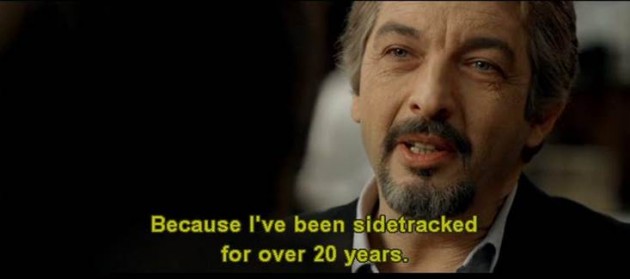
Societal stasis shown as personal experience
This ending can also be related to a characteristic of Campanella’s films that distinguish them from some of the others which star Darín, and perhaps help explain their greater popularity. Whereas in films such as Nueve reinas or Carancho (2010, Pablo Trapero), the central character remains beaten down at the end, Campanella instead offers what Andermann describes as a fantasy space “reminiscent of Frank Capra’s cinema” (40) where after the protagonist hits “rock bottom” (41), he becomes reenergized and miraculously saves the day, resolving both his romantic and professional problems. In El hijo de la novia, Darín restarts the family restaurant instead of selling out to a Mafia-tinged organization while winning back his girlfriend and daughter. In Luna de Avallaneda (2004), he saves a working class club from a multinational real estate developer and reconnects with his wife. Andermann writes that in both cases it is the “larger-scale, socio-economic crisis of Argentine society as a whole that precipitates the Darín character’s personal crisis, pushing it to its dramatic climax and subsequent resolution” (41). Similarly, Benjamin in The Secret in Their Eyes is rendered helpless and fails to achieve justice through his investigative efforts. Even though he returns from exile and resumes his previous life, he remains a defeated man unable to follow up on his romantic yearnings and he and Irene never, as the dialogue makes clear, even mention the case. But, just as in the earlier Darín-Campanella collaborations, the defeat of the protagonist is so detailed and convincing that it takes an element of Capra-style fantasy to reach a positive resolution. Seen in this context, the almost certainly deliberately exaggerated and fantastical nature of the ending of The Secret in Their Eyes, far more baroque than the fantasy-tinged endings of the earlier films, seems to be an admission that while facing its history is necessary for Argentine society to break out of its paralysis, true justice will never be achieved for many of the victims of the Dirty War. That is, the gothic exaggeration of the ending is designed to both allow a positive resolution of Benjamin’s personal situation (he gains the resolve to rekindle his romance with Irene) and signal to the audience the falseness of this resolution, and that, unlike the killer in this story, many of the murderers will never receive the punishment they deserve.
Despite the political concerns which are central to its narrative structure, it is important to emphasize that the coded messages, which would have great resonance for domestic audiences and help explain why the film was so much more popular than equally well-made thrillers from Argentina or elsewhere, are presented in such a way that they could for the most part be easily ignored by international audiences focusing on the thriller and romance elements. That there is a political element is obvious, but all that is necessary to make sense of the film is that there was state-sponsored political violence in 1970s Argentina. The additional coded messages which layer and contextualize the story are often offered as asides or throwaway lines that would be recognizable only to the informed viewer. Interestingly, Campanella transmits his multiple messages without resorting to the “global aesthetic” which Falicov complains of (97). While much of The Secret in Their Eyes is set in generic locations (law courts, a pub, Benjamin’s apartment), there are references which identify the locale as the Avallaneda section of Buenos Aires, which is also where El hijo de la novia and Luna de Avallaneda_ were set. Indeed, the area’s local football team, Racing, is not only mentioned, but a joke is told which only makes sense if one is familiar with the team’s nickname (“the Academy,” the devotion to which is why the notary is called Plato) and the working out of an important clue involves identifying and explaining the significance of several of the team’s former players. But again, while this provides local specificity for domestic viewers, the comic way it is integrated means that all an international audience needs to understand the scene is that the notary is a sports fanatic, which is a type that can be found in many cultures around the world. Using Racing football club also allows one of the many times Peron is referred to without using his name, as Racing’s home stadium, which is the subject of the film’s spectacular shot, is named Estadio Presidente Juan Domingo Peron. This is a fact which is pertinent to the plot (for those who catch the reference), as it had only reverted to its original name in 1973, the year before the film’s rape-murder takes place, after eighteen years under another name while Peron was in exile. However, this is not a fact that needs to be known to appreciate the sequence and is a good example of the film’s ability to be simultaneously local and international.
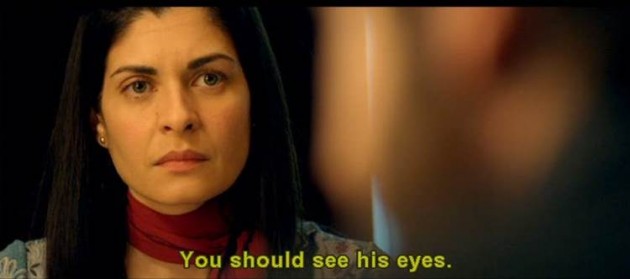
While the connection between Campanella’s films and the tradition of political cinema seems clear, the connection of either to New Argentine Cinema is sharply disputed. As Demetrios Matheou notes, “When one thinks of the Argentine Cinema of the past decade, it tends to be of the disparate band of directors associated with New Argentine Cinema . . . [and] Campanella’s name doesn’t come up in the same conversations” (21). Similarly, Lusnich argues that Campanella’s films’ links to the industry’s genre and star systems, a criticism that can as easily be used against political films such as La historia official, puts them in a different category than the movement which began in 1997 with that gritty slice of lumpenproletarian despair, Pizza, birra, faso (Adrián Caetano and Bruno Stagnaro). Campanella’s background as a graduate of NYU rather than an Argentine film school and his practice of dividing his time between writing and directing genre films in Argentina and directing episodes of glossy, big budget TV series in the U.S. (including House, 30 Rock and various Law and Order spin-offs) might also count against him, just as the background of Luis Puenzo, director of La historia official, in advertising is brought up by critics (Falicov 71), best exemplified by Alberto Tabbia’s backhanded compliment about La historia official that “Luis Puenzo, a young veteran of commercials, has tailored an efficient and incisive piece of filmmaking, such as may derive from considering Kramer vs Kramer a classic” (43). Campanella tends to see himself as arbitrarily excluded, telling an interviewer that New Argentine Cinema “was a movement created by the critics, and the critics did not put me in it” (Matheou 21).
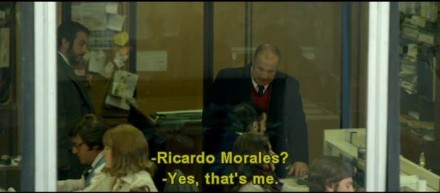
Frames within frames
Yet even Campanella acknowledges that his films could be seen as “conservative” (Matheou 21), for perhaps what most distinguishes “indie-commercial” directors such as Campanella, Burman and Bielinsky from the New Argentine Cinema directors is the latter’s greater willingness to experiment with form. However, despite this formal difference, it is possible to relate The Secret in Their Eyes to thematic concerns which run through their films. Ana Forcinito notes that the act of “gazing” is central to both the political dramas and New Argentine Cinema (67), and films of the post-dictatorship era often “include images of covered or uncovered eyes, a clear allusion to the blindfolded victims in the detention centres, and the affirmation of the eyes of the witnesses, what they saw and heard” (74). Given this, it is interesting to note that Campanella’s film is organized around the idea of the gaze. There are constant and repeated close-ups of the eyes of various characters, and many scenes are staged to emphasize one character looking at another or will often feature a character standing to one side observing a conversation by two other characters in the foreground. When Benjamin is shown alone, the act of looking continues to be emphasized as he is framed several times within doorways. Frames within frames are used elsewhere in the film, as in the initial meeting between Benjamin and Morales, the victim’s husband, which groups the two and a police officer within the frame of a window. A later example involves the initial viewing of the footage of the killer with Isabel Peron on Benjamin’s TV screen, which is in turn seen through the frame of his kitchen alcove. This suggestion of reflexivity is reinforced by the film’s designating the photograph (and, by extension, film) as more reliable than the naked eye or memory. This is made explicit in the use of two photographs. The first is the photo of the victim which reveals to Benjamin who the killer is, and the second is the photo of Irene’s engagement party which reveals to Benjamin why he was able to interpret the first photo. In both cases, the camera acts as a truth-teller. However, this view of film as a tool for revealing truth is complicated in a way that again links it to the concerns of independent Argentine films.
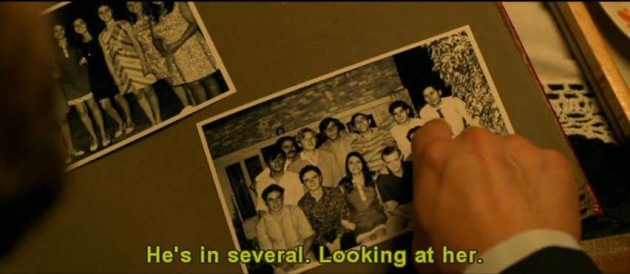
Forcinito writes that a central issue for New Argentine Cinema directors such as Lita Stantic and Albertina Carri is that “the representation of violence raises questions about the very possibility of portraying the images that are now being remembered, and of imagining visions for those images that had disappeared” (68). In particular, Carri’s Los rubios (2003) emphasizes that memory is a construction, particularly when faced with the problem that the most important memories disappeared with the victims of the Dirty War (Forcinito 78). The Secret in Their Eyes is concerned with this issue which, as Forcinito notes, was directly related to the issue of overturning the Pardon Law and the “wall of silence” which accompanied it (78-79). Campanella repeatedly has his characters address the question of memory. For example, Morales wonders at one point if he actually still remembers his wife, or if instead he is only remembering “memories of memories.” Similarly, Irene disputes Benjamin’s account of their farewell at the train station, and he can only respond with “But that’s what happened . . . isn’t it?” Significantly, this account, which is part of Benjamin’s attempt to reconstruct and confront the past, is in the form of a novel rather than a non-fiction memoir. And as Irene points out, novels don’t have to be truthful.
Most importantly, the three acts of violence portrayed are all shown as flashbacks. The initial rape-murder and the killing of Sandoval by the death squad are both remembered by Benjamin, who did not directly witness either. They are, in fact, speculative recreations of violent acts committed (either allegorically or explicitly) by the security services. In the case of Sandoval, Benjamin even admits he is not sure what happened, and his “flashback” is only what he believes occurred. The third flashback, where Morales recounts how he shot the killer, turns out to be untrue, implying that cinematic representations can possibly give equal weight to real memories and false ones and engaging with the question Carri raises of “the fictionality of memory and the impossibility of accurately reconstructing memory” (Forcinito 80).
Another theme The Secret in Their Eyes shares with the New Argentine Cinema directors involves the undermining of masculinity. Central to Campanella’s films is the beating down of the male hero to a position of powerlessness which parallels the country’s larger failings, a process which also occurs in New Argentine Cinema films such as Pizza, birra, faso and Born and Bred (2006, Pablo Trapero). Indeed, this thematic commonality helps account for Carancho (2010), a noir-ish thriller starring Ricardo Darín that provided a seamless entry into genre cinema for New Argentine Cinema stalwart Trapero which nevertheless remained very much a piece with his other films.
The Secret in Their Eyes sketches Benjamin’s journey to powerlessness in a way intimately connected to the film’s use of the gaze. There are two scenes in which Benjamin (along with Irene, the woman he would like to impress) confront the killer. In the first scene, they look directly at the killer, but he looks down or at their chests, and only looks at their eyes when he is goaded into giving himself away. Significantly, at the same time as he confronts Benjamin and Irene, he pulls out his penis, which is then scornfully dismissed. In the second scene, the killer is now in the security services as he joins Benjamin and Irene in an elevator. They stand there helpless and try not to look at him as he takes out his phallic pistol and checks that it is loaded. When he steps off the elevator, he turns and looks at them directly. The power of the gaze, which has been equated with masculinity through the use of the penis and gun, has now shifted to him, just as the power in Argentina had shifted from civil society (which Benjamin and Irene represent) to the paramilitaries (represented by the killer). This undermining of Benjamin’s masculinity is, in turn, linked to his inability to consummate his romance with Irene.
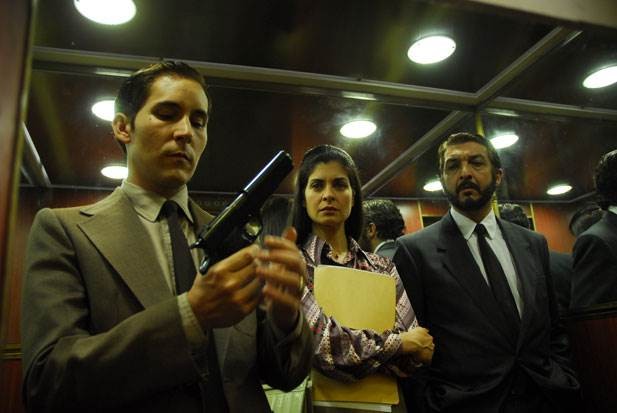
A further shared concern is the need to confront what Forcinito describes as “the paralysis that accompanies the impunity process” (69), the need to repress memories of historical events which would draw attention to the fact that the Pardon Law allowed murderers to walk around freely in Argentine society, which Forcinito considers to be central to the work of Lita Stantic and Albertina Carri. This repression and the limbo it places society in are mirrored by Benjamin’s never discussing the case with Irene, his belief that he has been “sidetracked for over 20 years” and even the revelation that Morales has never spoken to his captive during the 25 years of his imprisonment. Like the New Argentine Cinema directors, Campanella expresses the societal need to break down the “wall of silence” that prevents seeking justice for the victims of the junta.
The Secret in Their Eyes has to be considered foremost as an example of commercial cinema. It uses genre conventions and its star’s persona to tell its narrative and has a professional polish beyond most Argentine films. However, its ability to appeal to an international audience while remaining intimately connected to Argentine cultural and societal concerns through the intertwining of the plot structure with historical events marks it as a transnational film that is also linked to other important streams in Argentine national cinema. It is a hybrid, an “indie-commercial” film that contains elements from Hollywood, Argentine genre films, domestic political cinema and the New Argentine Cinema, mixing them together to create something that struck an unprecedented chord with audiences. There is more to it than it seems.
*This essay is an expansion of this previously published piece: Hanley, David. “The Secret in Their Eyes (El secreto de sus ojos),” in Rist, Peter H. Historical Dictionary of South American Cinema. Lanham, MD: Rowman & Littlefield, 2014. 520-522.
Works Cited
Andermann, Jens. New Argentine Cinema. London, UK: I.B. Tauris, 2012.
Aguilar, Gonzalo. “On the Existence of the New Argentine Cinema.” New Argentine Film: Other Worlds. New York, NY: Palgrave MacMillan, 2011. 7-31.
Falicov, Tamara L. The Cinematic Tango: Contemporary Argentine Film. London, UK: Wallflower Press, 2007.
Forcinito, Ana. “Violence and Representation: Postdictatorship Visions in Lita Stantic and Albertina Carri.” _Violence in Argentine Literature and Film (1989-2005) _. Ed. Carolina Rocha and Elizabeth Montes Garcés. Calgary, AB: University of Calgary Press, 2010. 67-89.
Lusnich, Ana Laura. “Electoral Normality, Social Abnormality: The Nueve reinas/Nine Queens Paradigm and Reformulated Argentine Cinema, 1989-2001.” New Trends in Argentine and Brazilian Cinema. Ed. Cacilda Rêgo and Carolina Rocha. Bristol, UK: Intellect, 2011. 117-130.
Matheou, Demetrios. “Beyond Law and Order.” Sight & Sound. 20.9 (2010): 21.
Page, Joanna. Crisis and Capitalism in Contemporary Argentine Cinema. Durham, NC: Duke University Press, 2009.
Shaw, Deborah Ms. “Playing Hollywood at Its Own Game? Bielinsky’s Nueve reinas.” Contemporary Latin American Cinema: Breaking into the Global Market. Ed. Deborah Shaw. Lanham, MD: Rowman &
Littlefield, 2007. 67-85.
Tabbia, Alberto. “Argentina.” Variety International Film Guide 1986. Ed. Peter Cowie. London, UK: The Tantivy Press, 1986. 41-46.
Tanvir, Kuhu. “The Secret in Their Eyes.” Wide Screen. 2.1 (2010).
Travers, Peter. “The Secret in Their Eyes.” Rolling Stone. (April 15, 2010).
Notes
- Box office and budget information was collected from data available in the annual Variety International Film Guide series, the individual editions being produced by a variety of London-based publishers, including Faber & Faber, Virgin Books and the Wallflower Press; and from the website Box Office Mojo. ↩



